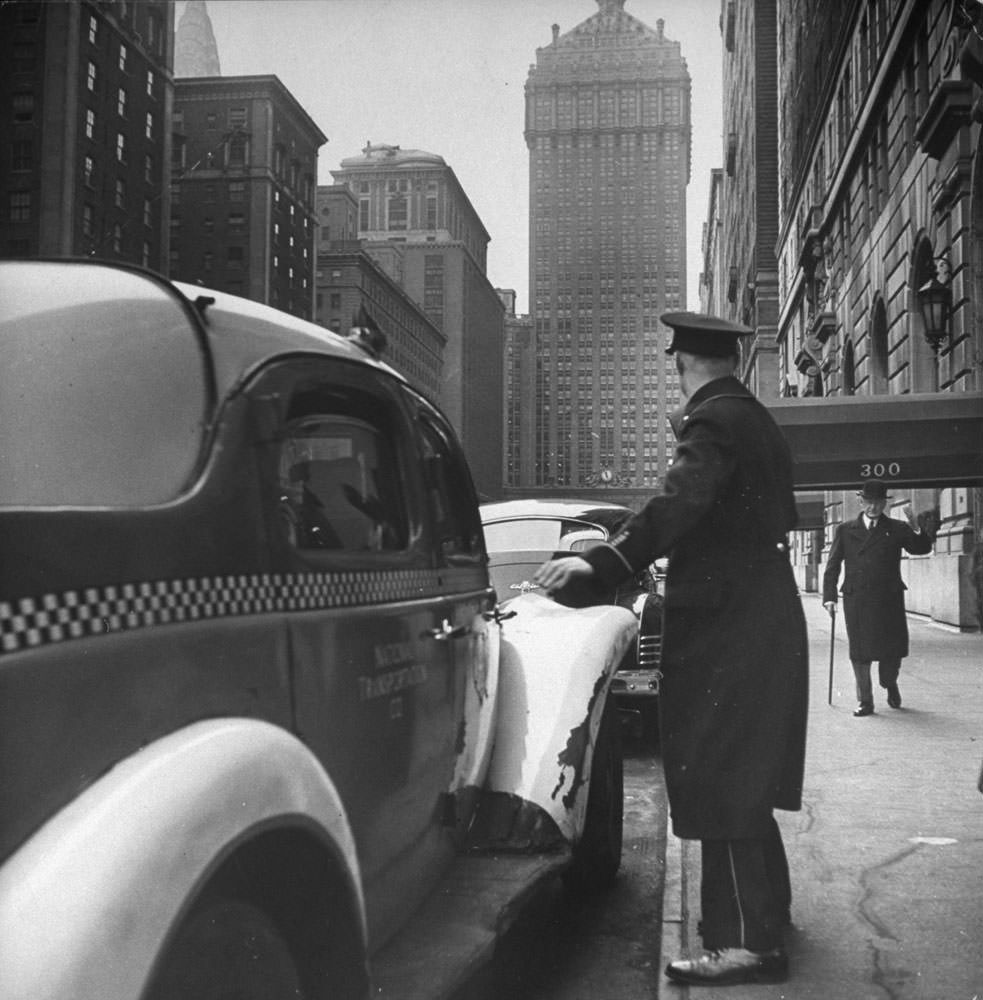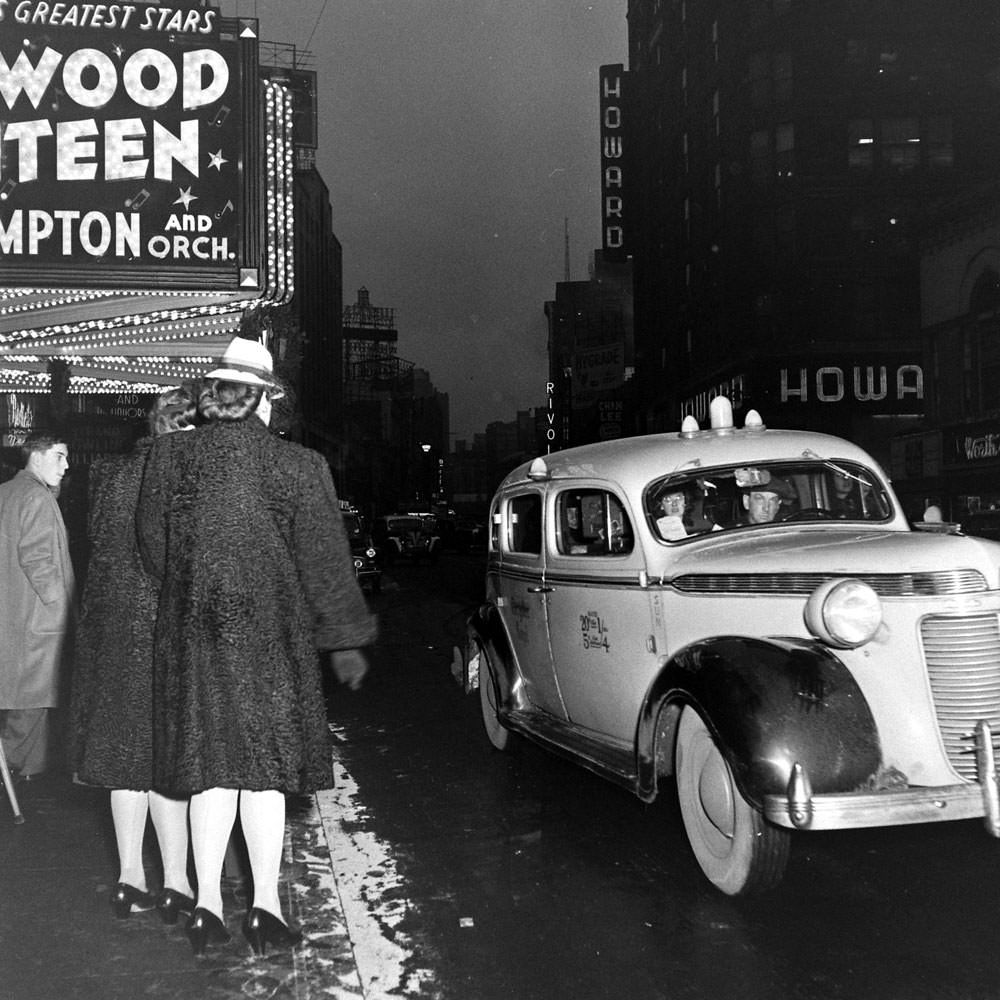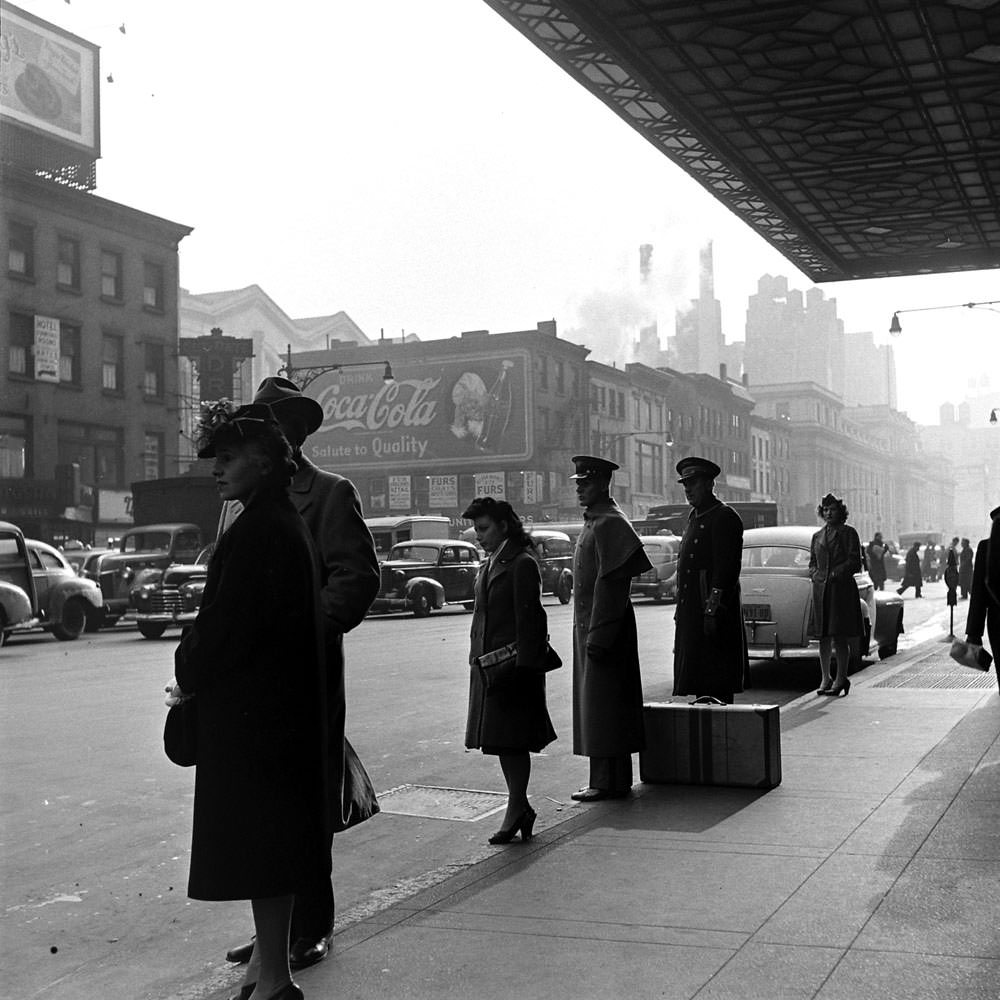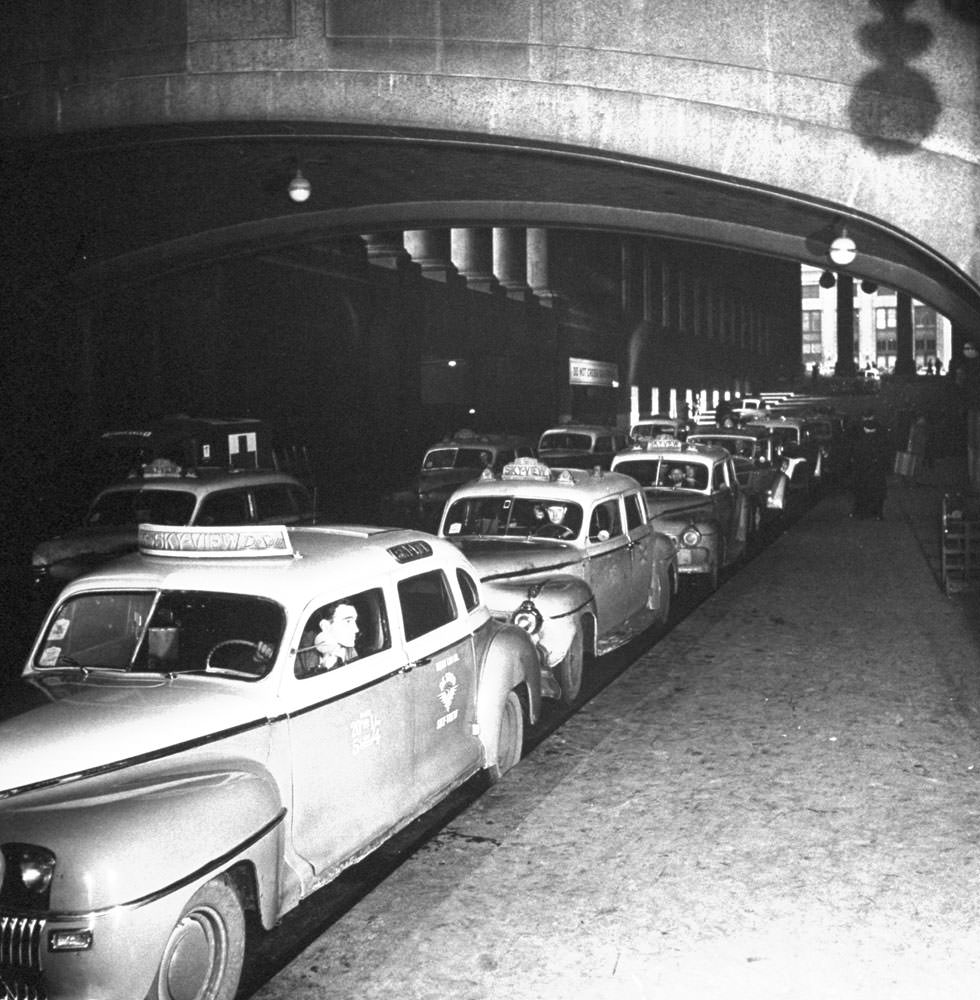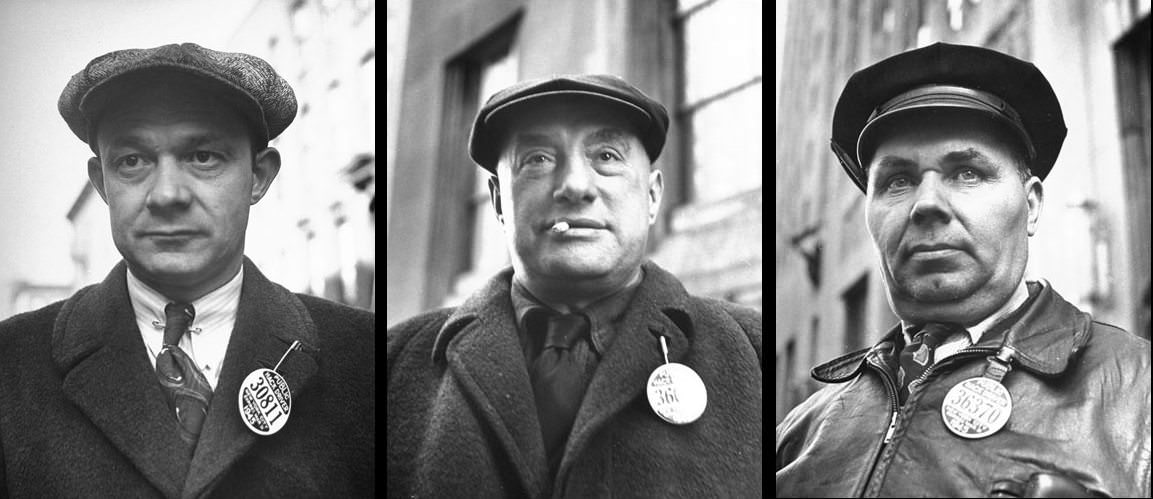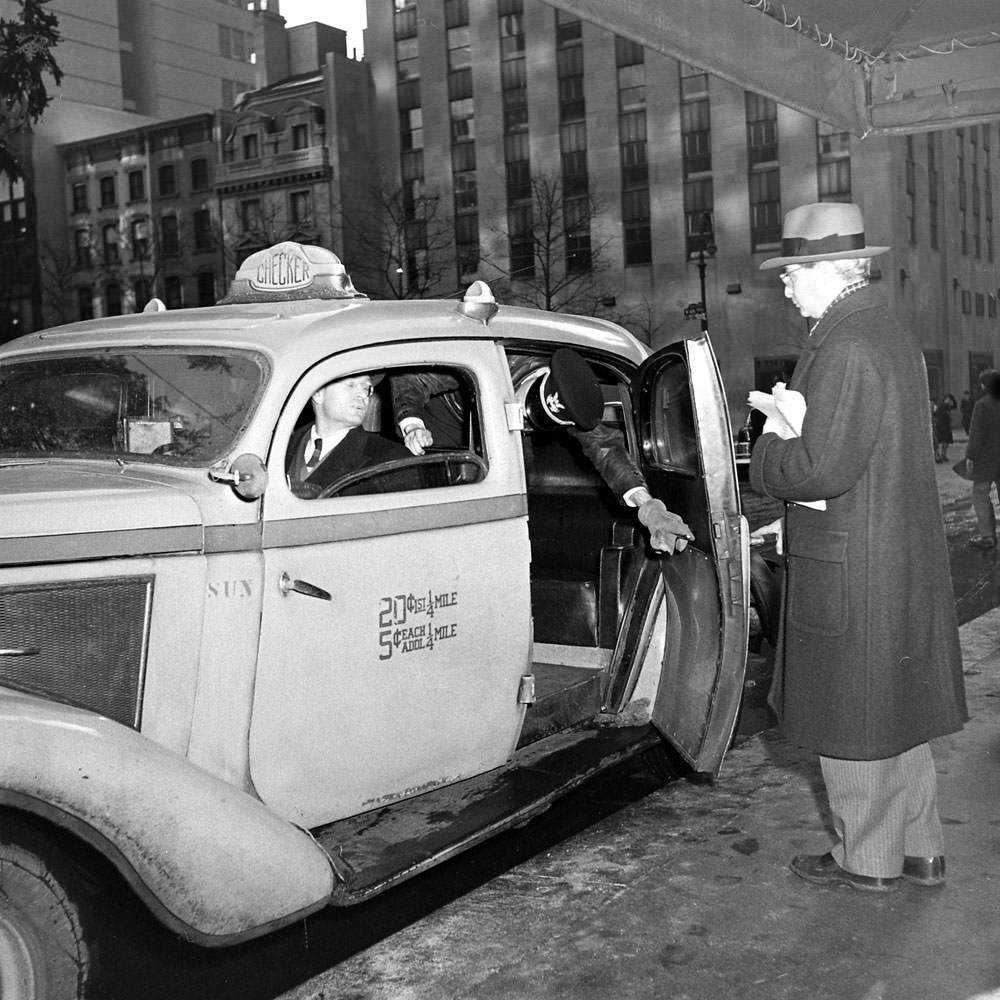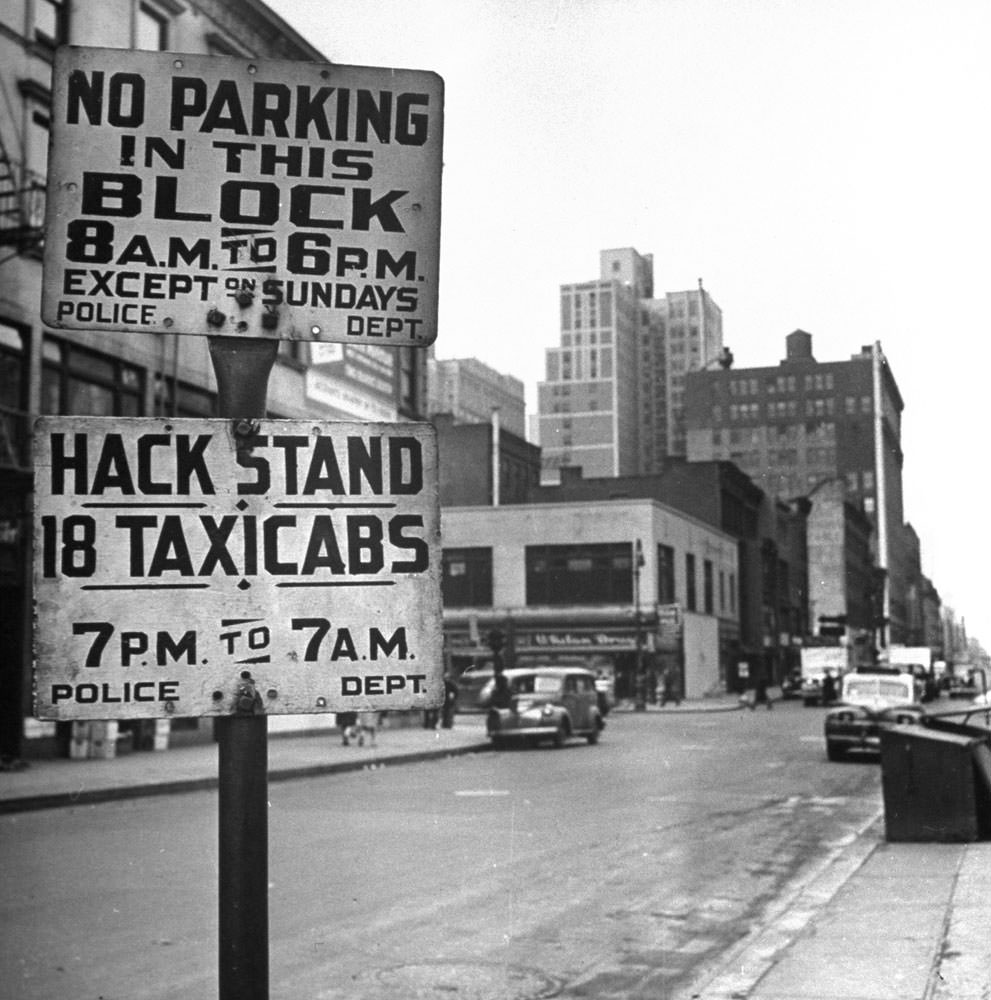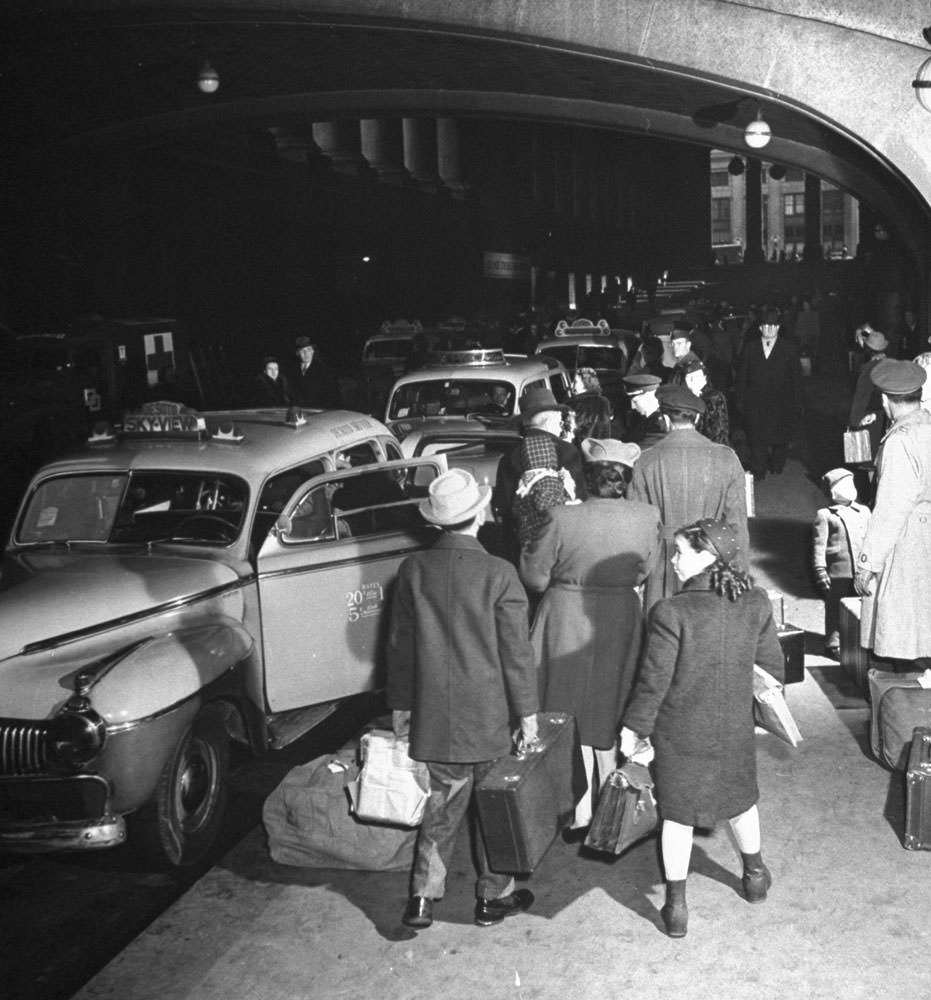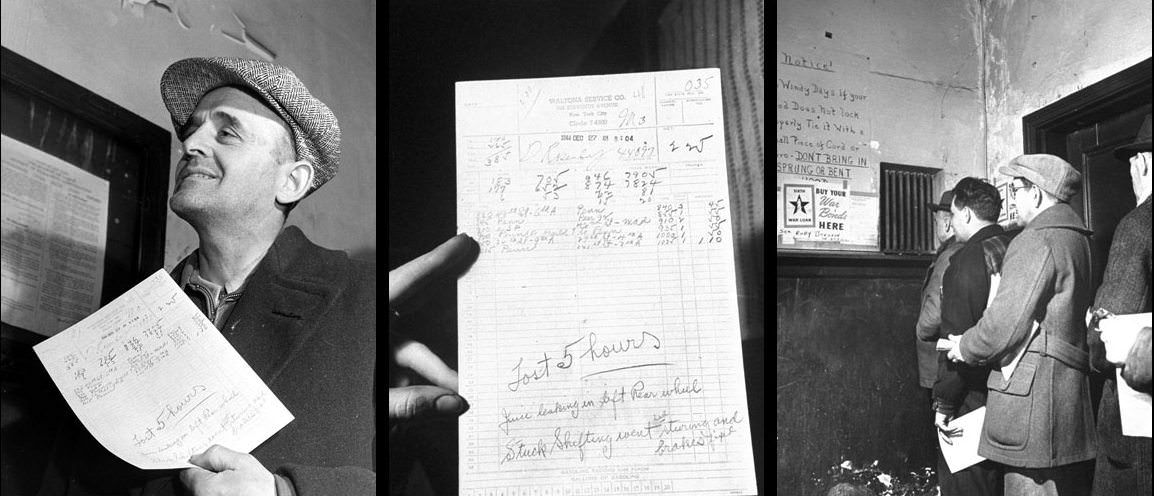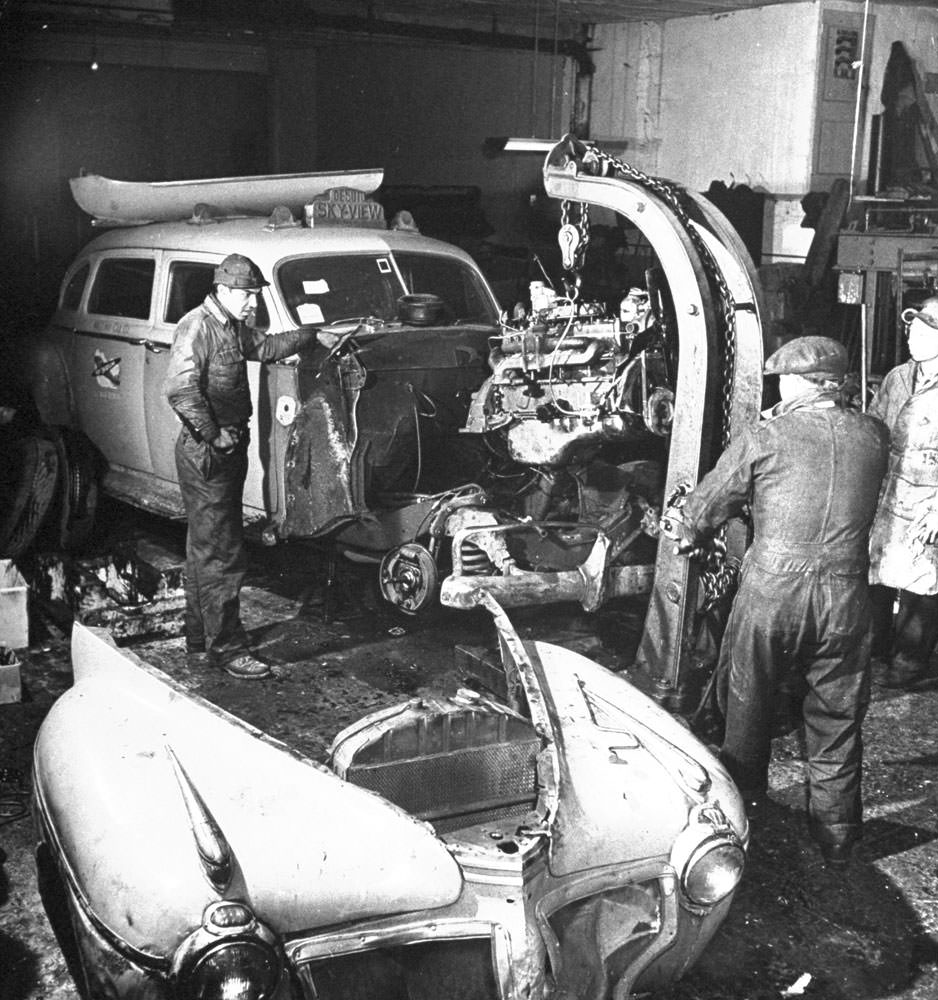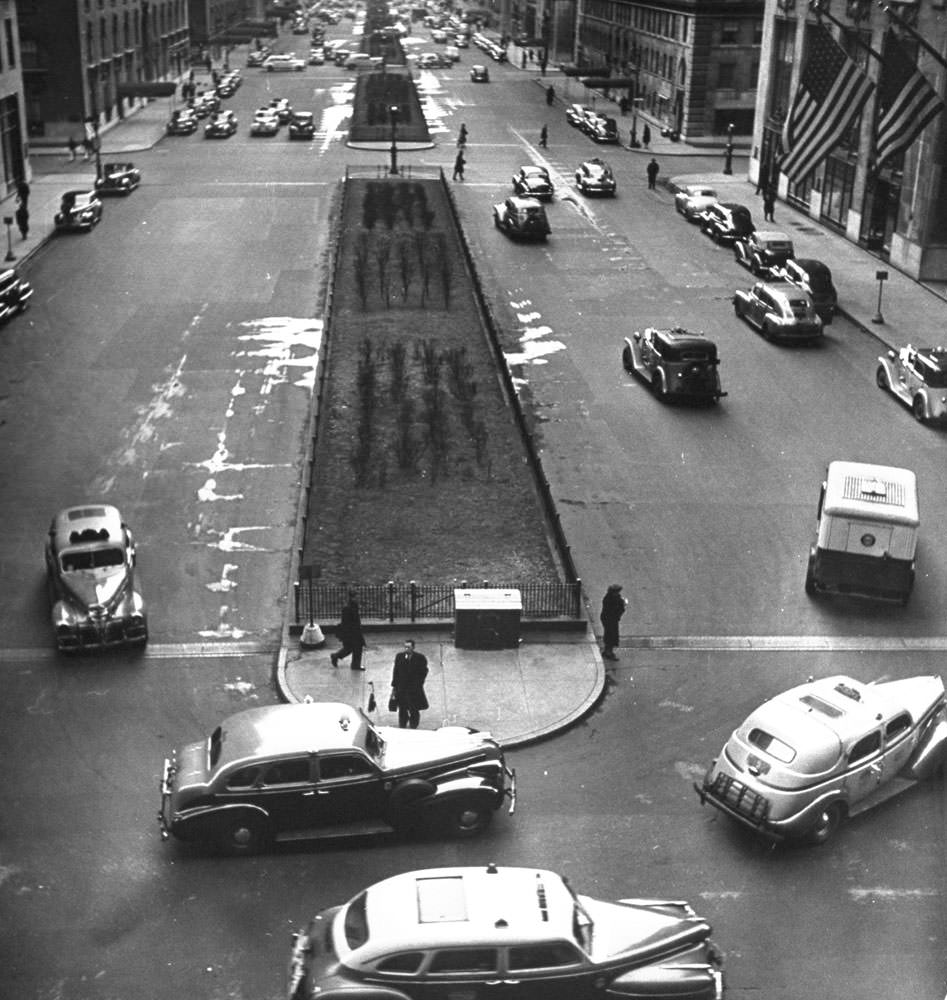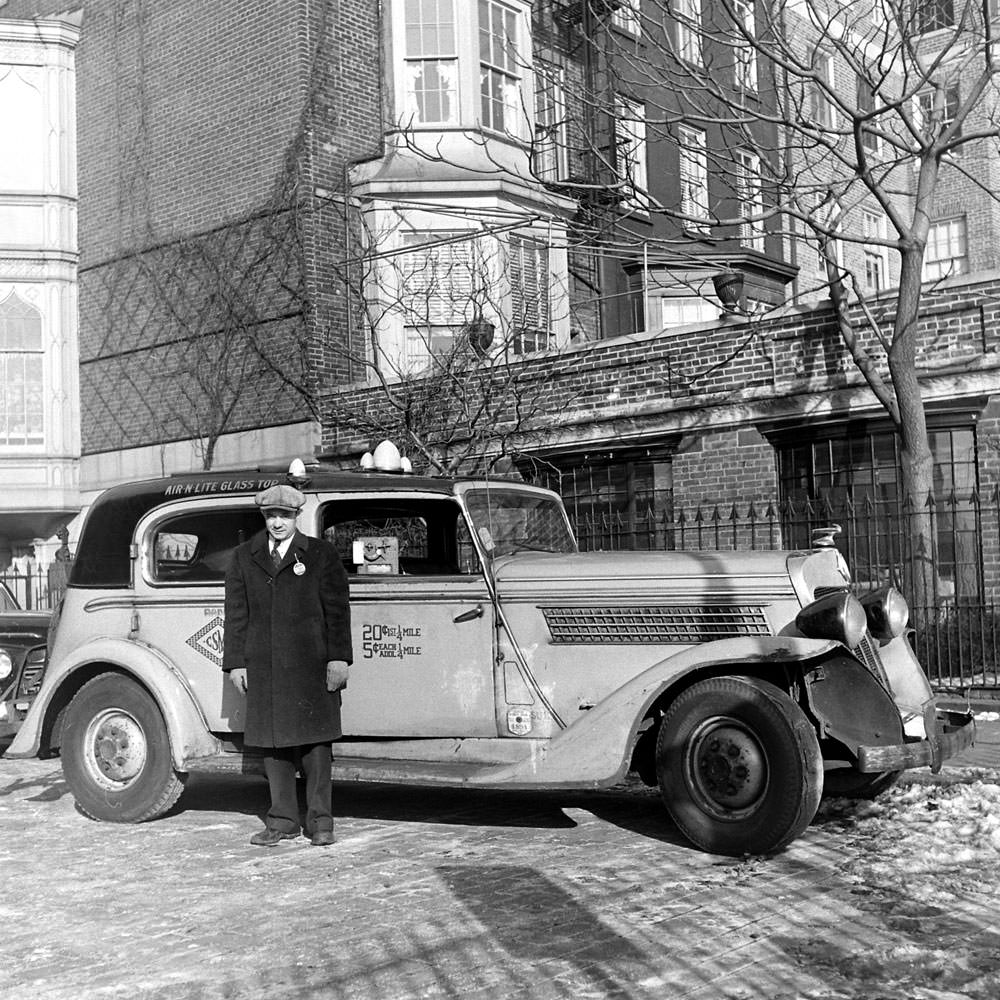New York City in 1944 was a city operating at full tilt, deeply immersed in the realities of World War II. On its busy streets, amongst crowds of people including many in military uniform, taxi cabs were a constant and crucial presence. These vehicles and their drivers played an essential role in keeping the vital metropolis moving during a demanding time.
The taxi cabs common in 1944 were typically large and solidly built automobiles. Because car manufacturing for civilians had largely stopped due to the war effort, most taxis were pre-war models from makers like Checker, DeSoto, or Plymouth, dating from the late 1930s or very early 1940s. These vehicles were workhorses, often showing signs of age but kept on the road through careful maintenance. While the iconic yellow color associated with NYC taxis was becoming more widespread, cabs could still be seen in other colors as well.
Running a taxi service during the war came with specific difficulties. Gasoline rationing was in effect across the country, limiting the amount of fuel a driver could purchase. Rubber was also a precious commodity needed for the military, making tires scarce and expensive. Taxi operators had to manage these shortages carefully. Drivers might also have had to contend with nighttime driving restrictions or blackout conditions, particularly earlier in the war years. Despite these challenges, taxis provided indispensable transportation for factory workers, military personnel visiting the city or on leave, and residents going about their daily business.
Read more
The drivers behind the wheels of these cabs were often seasoned veterans of New York City’s streets. Photographs from the period, such as those taken by LIFE photographer William C. Shrout, sometimes depict these men as tough-looking, no-nonsense characters, frequently wearing caps or hats. They possessed an intimate knowledge of the city’s complex grid of avenues and streets. Their job involved navigating not just traffic, but also the daily realities of wartime shortages and the fast pace of the city.
For passengers, catching a cab in 1944 usually involved standing at the curb and waving one down. Once inside the often spacious interior, the ride would begin with the distinct sound of the driver engaging the meter. A trip offered views of a city bustling with wartime energy – sidewalks crowded with pedestrians, posters encouraging war bond purchases or warning against loose talk, and the general hum of a city contributing to the war effort. Taxis ferried people between homes, workplaces, train stations, docks, theaters, and restaurants.
These large, rumbling taxi cabs and their drivers were an integral part of the New York City landscape in 1944. They were constantly in motion, weaving through traffic day and night, representing a vital service that helped the city function under the pressures of wartime. They were as much a part of the era’s character as the hats worn by men or the gloves worn by women mentioned in nostalgic descriptions of the time.


